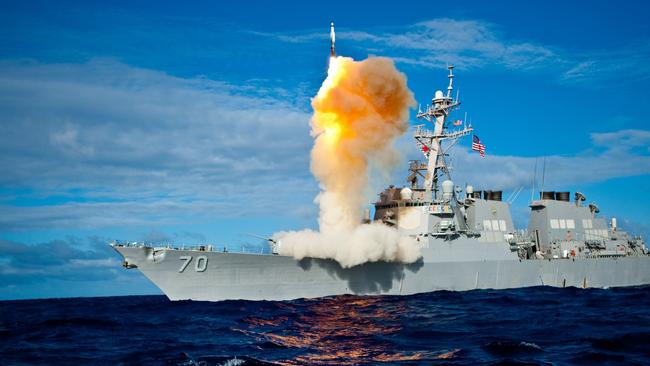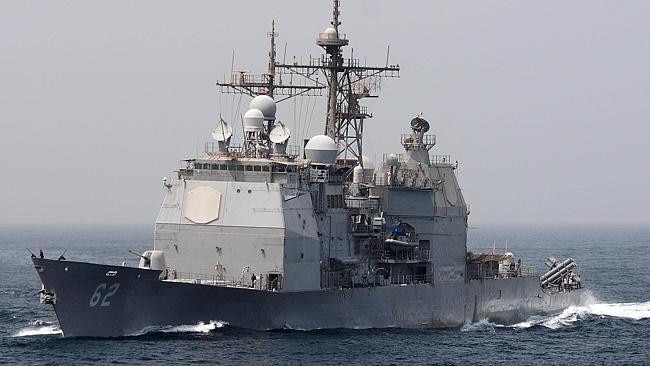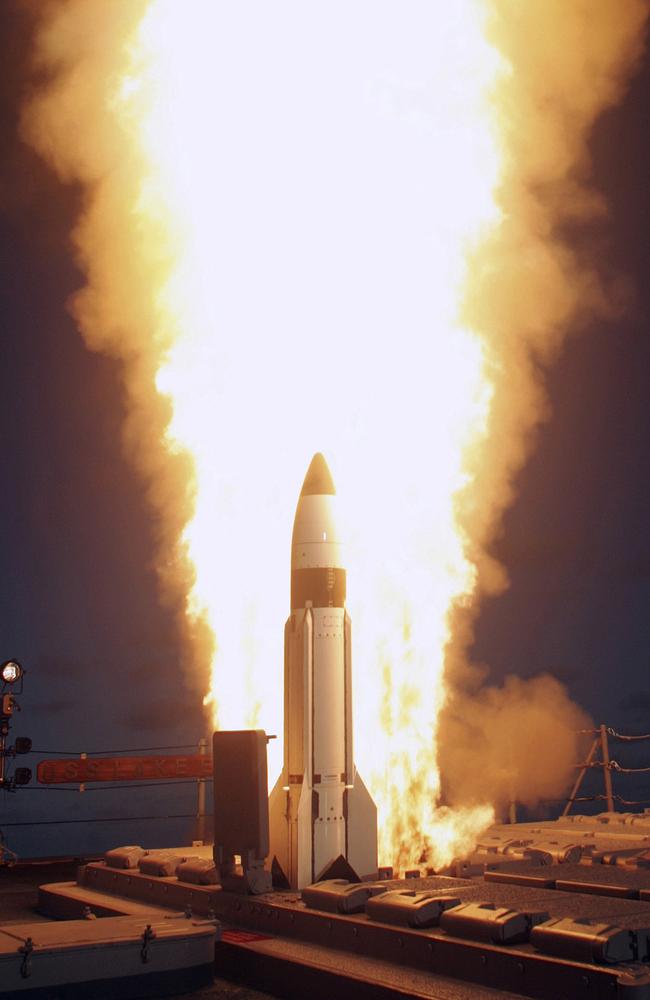US, Japan, South Korean warships practice shooting down Kim Jong-un’s ballistic missiles
WITH the threat from North Korea growing, the US is racing against time to perfect its anti-ballistic missile technology.

KIM Jong-un’s provocative ballistic missile tests are being taken seriously.
The rollout of the land-based Terminal High Altitude Area Defence missile system has recently been completed in South Korea. Japan has finished redeploying its Patriot air-defence missile systems.
Now both nations, in concert with the United States, are practising missile interceptions at sea.
#LINKEX #USSStethem and #USSMilius + ships from the Republic of Korea Navy and Japan Maritime Self-Defense Force https://t.co/hMMvMNLQBz
— 7th Fleet (@US7thFleet) October 24, 2017
The two-day missile-warning and interception exercise kicked off overnight Australian time.
Four advanced Aegis combat system ships, which combined advanced radars, computers and missiles, have put to sea.
No missiles will be test fired.
But the Japanese, South Korean and US ships will practice the delicate balance of being in the right place at the right time to respond fast enough to the first radar warnings of a ballistic missile launch from North Korea.
RELATED: Why nobody has attempted to shoot-down North Korea’s missiles

Getting accurate speed and position data — fast — and sharing it among the ships so the vessel is in the best position to launch its own missiles is what the exercise is all about.
A delay of even seconds could mean the window of opportunity is lost as a North Korean ballistic missile rapidly accelerates high into the stratosphere.
“The latest exercise is designed to prepare against growing nuclear and missile threats by North Korea in accordance with the agreement made during the 48th Security Consultative Meeting between South Korea and the US in October 2016,” Yonhap news agency reports South Korea’s Joint Chiefs of Staff as saying.
Yonhap news reports this is the fifth such missile intercept drill conducted jointly by the three nations since June last year.

JUST ONE SHOT
While the sensitive radars aboard all three nation’s Aegis combat system warships are capable of providing the early warning and tracking needed to intercept a ballistic missile, not all of the ships have the ability to shoot one down.
And the ship that can do this must be ideally positioned for its own missiles to respond with any chance of success. Even then, it would be a feat worthy of William Tell - the legendary archer who shot an apple off the head of a boy at 120 paces.
The necessary advanced versions of the Standard interceptor missile (designated SM3 and SM6) have not yet been made widely available among US allies.
This includes Australia’s new Aegis-equipped Air Warfare Destroyers — such as HMAS Hobart which was recently accepted into service in Sydney.
That could present a problem — given the loss of two advanced US Arleigh Burke class guided missile destroyers in Asia recently to collisions.
One of the ships taking part in the missile-defence exercise off South Korea is the USS Milius. She has been temporarily detached from the US Third Fleet (Eastern Pacific region) to operate with the US Seventh Fleet in Asia to help cover just that gap.

And things are about to get worse.
The US Navy has announced plans to decommission 11 of its 22 Ticonderoga-class missile cruisers between now and 2026. The move was announced the same day details emerged about a dangerous collapse of morale aboard one of these ships.
The cruiser USS Shiloh is one of the few US Aegis-equipped warships stationed off Japan and South Korea that carries the advanced models of the Standard missile.
The state of exhaustion among its crew and a lack of faith in its commanding officers produced comments in a recent survey including: “I just pray we never have to shoot down a missile from North Korea ... because then our ineffectiveness will really show.”





